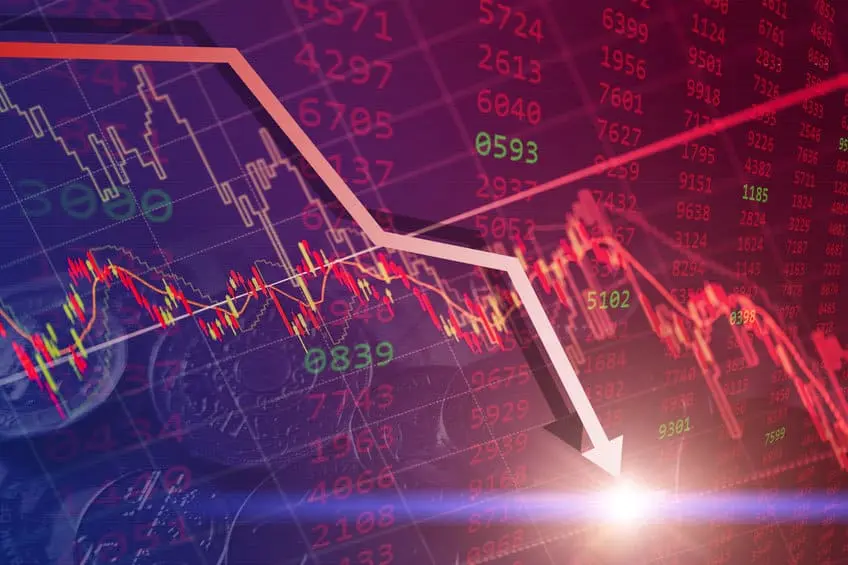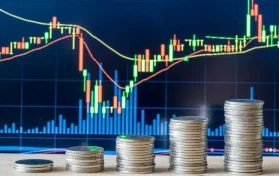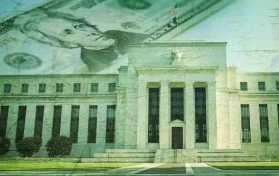
It’s no secret that the American – and global – economy is bleak at the moment. Americans are paying over four dollars per gallon for fuel, and grocery store shelves – which may or may not be fully stocked – offer items that are often double what consumers were paying for them just one year ago. In California, gas prices are hovering near $8 per gallon. Diesel is over five dollars per gallon, which leads to higher prices at brick and mortar stores for Americans. Wall Street has taken historic dives. Simply put, things don’t look too bright when it comes to the economy.
Multiple economists and major financial institutions are predicting a recession in the near future (some say it will happen in 2022, while others hold that it may be 2023). Keep in mind that a recession is defined as two consecutive quarters of the Gross Domestic Product falling. In Q1 of 2022, the GDP was down by -1.5. In order to meet the definition of recession, if the GDP is down again at the end of June, the American economy will officially be in a recession.
However, predicting a recession is actually more difficult than one might expect.
The Federal Reserve is working to fight inflation while keeping the country’s economy from falling into a recession. Fed Chair Jerome Powell said earlier this year that the Fed must be “humble and nimble” when raising interest rates. So far, the Fed has raised interest rates by one quarter point and one half point. More half point rate increases are expected.
Several times, Jay Powell has said that the intent of the Fed is to engender a “soft landing” – slowing down consumer demand so that prices begin to hold steady while the rest of the economy catches up. However, historically, the central bank of the United States has struggled to find that so-called “sweet spot” that prevents a recession while cooling off consumer spending.
The target rate of inflation, as far as the Fed is concerned, is two percent. The highest rate of inflation in 2022 was 8.5 percent at the end of March. At the end of April, however, inflation had decreased only slightly to 8.3 percent. (May reports have not been released as of this writing.) Economists at Bank of America, Goldman Sachs, Deutsche Bank, and Wells Fargo are all predicting a recession. Elon Musk even tweeted recently that he “had a bad feeling” about the economy. On Friday, Musk said that he may have to cut his staff at Tesla by ten percent.
Now, not all economists are predicting doom and gloom. Alan Blinder, a former vice chair at the Fed and a current Princeton University economist, has looked at historic patterns of recessions. Since 1965, the American economy has weathered at least eleven different times when the Fed began tightening the economy. Only eight of those eleven times were followed by a recession. Many times, there was no economic decline at all.
Blinder did say that a recession in the coming months or even next year is not a certainty – “Will we get stuck with a recession? Maybe. . . It’s important to note that any recession shouldn’t (necessarily) be deep and long.” Blinder brought up the recessions of the 1970s and the 1980s as an example, noting that not all recessions need to be that drastic.
Matthew Luzzetti, who is a Deutsche Bank strategist, has predicted that a recession will begin in April 2023, but he and his team at Deutsche say the recession is likely to be mild. Those a Deutsche Bank predict that the recession will work itself out in two ways: either it will be brief, or the GDP won’t fall by much and the economy will rebound rather quickly.
The Fed will likely raise interest rates throughout its meetings in 2022; economists believe these fifty point rate hikes will continue at each meeting.
At the same time, some economists offer a pessimistic view of the economy in the future. JP Morgan Chase CEO Jamie Dimon has predicted an “economic hurricane” that could be “Superstorm Sandy.”
It’s incredibly difficult to determine how the economy will go in the next year; Americans could be looking at a mild recession or something as drastic as 2008. In a midterm year, however, the economy could determine how Americans vote – and it should.
As one president reminded Americans, “Elections have consequences.”





